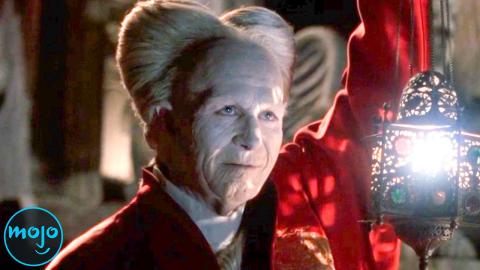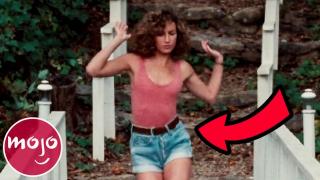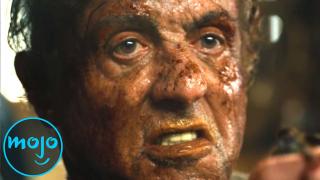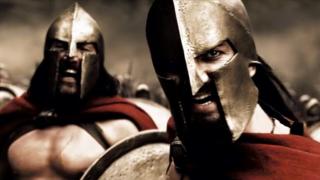Top 10 Historical Inaccuracies in Horror Movies

#10: Time-Traveling Whaling Unit
Top 100 Greatest Horror Movies of All Time
“Alien vs. Predator” (2004) Unsurprisingly, “Alien vs. Predator” isn’t all that interested in getting history correct. The central team travels to Bouvet island in the South Atlantic where they investigate an old whaling station. A flashback says that it was abandoned in the early 1900s, but it was only in the early 20th century that these kinds of facilities were established in this part of the world. For example, a similar type of station on South Georgia island was only created in 1904. This doesn’t even count the fact that Antarctica and its surrounding islands were only in the midst of being explored by European nations. Oh, and did we also mention that there aren’t any records of xenomorphs or predators on earth?
#9: Costumes from the Wrong Period
Top 10 Most Historically Inaccurate Costumes in Movies
“Bram Stoker’s Dracula” (1992) Set in the late 19th century, this adaptation of Bram Stoker’s novel takes artistic liberties with the time period. The costume design in particular doesn’t exactly follow the Victorian era’s dress code. Lucy and Mina both have a wardrobe that flies in the face of late-1890s conventions and designs. Researchers found that these characters were actually wearing clothes that were much more common in previous decades. These include dresses with bustle cages, worn by both women in the film. Lucy also wears a nightgown that’s much more for show than it is historically sound. While the movie’s costume designer won a much-deserved Oscar, they definitely aimed for style over accuracy.
#8: Tuberculosis Outbreak
“The Others” (2001) Set in the 1940s, this horror movie follows a woman and her children as they encounter some spooky events on Jersey island. The plot references an apparent tuberculosis outbreak that occurred on the island in the late 1800s. It’s ultimately unclear whether or not there was a large-scale transmission of the disease at that particular time. Through the 19th and early 20th centuries, the European continent and the United Kingdom lost millions as a result of TB. While it’s not certain if the terrible event happened decades earlier, it does inspire one potential cause for all of the dead haunting the area in “The Others.”
#7: Canada Stands in for New England
“The Witch” (2015) Director Robert Eggers has gone to many lengths to create his period horror films. “The Witch” takes viewers into colonial New England for a story about a rural family dealing with dark forces. Eggers originally intended to shoot in New Hampshire to capture the unique topography and visual accuracy of the area. The production decided instead to move to Canada, receiving tax incentives for filming north of the border. Luckily, the director was able to use the Canadian locations to their fullest potential. He also had great production design and costuming to make up for the inaccurate location.
#6: Vlad’s True Victims
“Dracula Untold” (2014) Trying to blend the legend of the iconic vampire with his real-life inspiration, “Dracula Untold” has some fun with history. The main character Vlad III appears to be a fearsome military leader that’s given the nickname “the Impaler.” While the actual man did impale his victims, he didn’t earn the moniker for his work in the Turkish Army. Many Turks were actually on the receiving end of his brutal punishments as he battled invaders of present-day Romania. Along with altering these facts, the movie portrays him as being made to fight for the Ottomans against his will. In reality, he was considered to be a hostage of higher status. Ultimately, the plot shies away from the broader implications of his campaigns.
#5: Abraham Lincoln & William Johnson
“Abraham Lincoln: Vampire Hunter” (2012) Ok, so nobody comes to this movie with historical accuracy top of mind, but this crazy take on the 16th president does feature a few curious references to real people and events. The relationship between Abraham Lincoln and William Johnson ends up becoming a central part of the film. The fictional Johnson is a childhood friend that becomes Lincoln’s closest ally on his vampire-hunting journey. But, in reality, Johnson was a valet to the commander-in-chief who previously had a working relationship with the Lincoln family. It’s fascinating that “Abraham Lincoln: Vampire Hunter” even includes this historical figure. Too bad the writers decided to create a new background for the man.
#4: Blood Transfusions
Top 3 Things You Missed From The Rambo 5 Last Blood Trailer
“The Last Voyage of the Demeter” (2023) After finding a stowaway on the ship, the resident doctor Clemens of the Demeter tries to help the unauthorized passenger by giving her his blood. With some rudimentary equipment, the medic manages to revive her and later lets the captain do the same for his son. The thought of doing such procedures on board a ship in the 19th century seems unsafe and historically questionable. Meanwhile, the crew keeps getting picked off by Dracula before a violent finale. Arguments could be made for its legitimacy during this era, but the working conditions and sterilization of the open seas raises some red flags. Many advances were made in the 20th century that would’ve been a great help to them, such as the understanding of blood groups.
#3: Integrated Units
“Overlord” (2018) Taking a twisted look at the events surrounding D-Day, “Overlord” follows the exploits of a paratrooper unit on a special mission. The group of American soldiers includes a multi-racial line-up of soldiers. In this version of history, the US military is desegregated several years before it happened in real life. The groundbreaking decision, known as Executive Order 9981, was actually issued by President Harry S. Truman after WWII. This banned the Armed Forces from discriminating by race in 1948. While meant to be an entertaining war movie, the plot does feature an interesting and thought-provoking spin on racial policies of the time.
#2: Bubonic Plague Hadn’t Reached America Yet
“Interview with The Vampire” (1994) Anne Rice’s gothic novel inspired this popular adaptation in 1994. Partially set in 18th and 19th century New Orleans, the movie depicts the city dealing with the plague. Rice’s vampires aren’t the only things fictional about this film though. The first recorded case of the disease came in the early 20th century in the US, making this particular outbreak another invention of the plot. It took until 1900 for ships to carry deadly and verified cases of the illness to American shores. While it provides a visceral and alarming backdrop for this tale, the filmmakers use the plague outside of its historical context.
#1: Inaccurate Casting
Top 10 Historically Inaccurate Movies
“From Hell” (2001) Dramatizing the Jack the Ripper case, “From Hell” stars Johnny Depp as the central character Inspector Frederick Abberline. His real-life counterpart was several years older, larger, and not considered to have the same movie star good looks. Abberline works with the older Sergeant Godley, but the actor playing the latter has even more of an age difference with the actual person. Robbie Coltrane is middle-aged while playing Godley, whilst the officer was a decade younger than his co-worker. Heather Graham’s turn as Mary Kelly also calls into question making the character skinnier and potentially altering her hair color. While some of these details can be disputed, it’s more than a bit of a stretch to see these performers in their respective roles.





